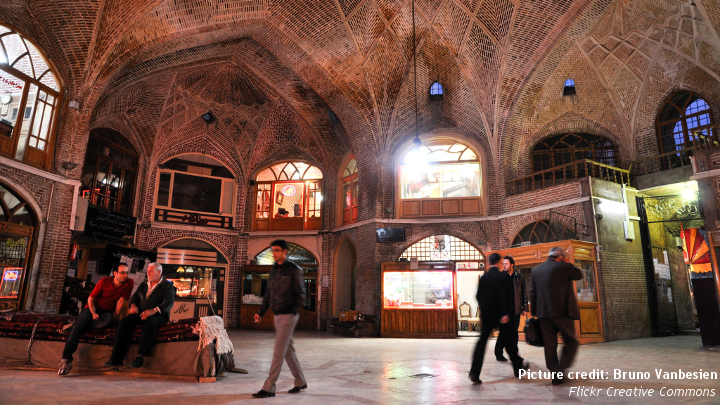10/4 CACI Book Launch: The New Secularism in the Muslim World: Religion and the State in Central Asia and Azerbaijan
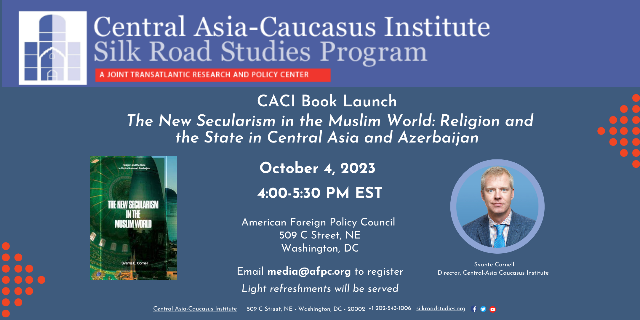
Across the Muslim world, religion and politics have become increasingly mixed in the past century, with devastating consequences. But there are signs that the ascendancy of political Islam may be coming to an end. In this context, the experience of Central Asia and Azerbaijan as Muslim-majority states that insist on secular laws, courts and education is a much-overlooked model that is bound to attract greater interest. THE NEW SECULARISM is the first study of the Central Asian model in the realm of the interaction of religion and the state, which examines its characteristics as well as how it relates to other frequently touted models in the Muslim world
Join us for the book launch and a discussion of CACI director Svante Cornell's "The New Secularism in the Muslim World: Religion and the State in Central Asia and Azerbaijan."
WHEN: October 4, 2023 4:00-5:30 PM
WHERE: American Foreign Policy Council - 509 C Street, NE, Washington, DC 20002
CACI Initiative on Religion and the Secular State in Central Asia and the Caucasus
In 2016, the Central Asia-Caucasus Institute & Silk Road Studies Program launched an initiative on documenting the interrelationship of religion and the secular state in the region. This initiative departed from the fact that little systematic reserch had been undertaken on the subject thus far. While there was and remains much commentary and criticism of religious policy in the region, there was no comprehensive analysis available on the interrelationship of religion and the state in any regional state, let alone the region as a whole. The result of this initiative has been the publication of six Silk Road Papers studying the matter in regional states, with more to come. In addition, work is ongoing on a volume putting the regional situation in the context of the Muslim world as a whole.
Case Studies
Each study below can be freely downloaded in PDF format.
Azerbaijan's Formula: Secular Governance and Civil Nationhood
By Svante E. Cornell, Halil Karaveli, and Boris Ajeganov
November 2016
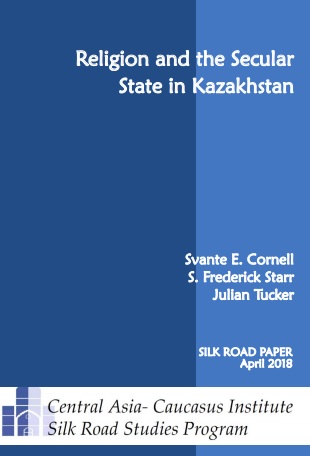 Religion and the Secular State in Kazakhstan
Religion and the Secular State in Kazakhstan
By Svante E. Cornell, S. Frederick Starr and Julian Tucker
April 2018
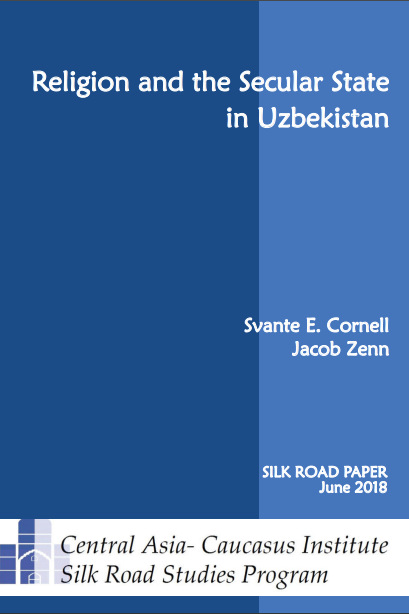 Religion and the Secular State in Uzbekistan
Religion and the Secular State in Uzbekistan
Svante E. Cornell and Jacob Zenn
June 2018
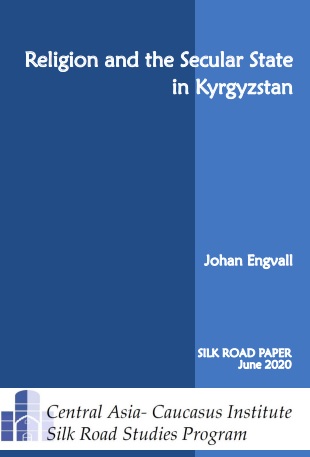 Religion and the Secular State in Kyrgyzstan
Religion and the Secular State in Kyrgyzstan
Johan Engvall
June 2020
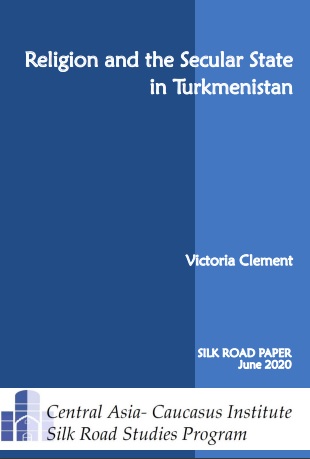 Religion and the Secular State in Turkmenistan
Religion and the Secular State in Turkmenistan
Victoria Clement
June 2020
Articles and Analyses
Svante E. Cornell, "Religion and the State in Central Asia," in Ilan Berman, ed., Wars of Ideas: Theology, Interpretation and Power in the Muslim World, Lanham, MD: Rowman & Littlefield, 2021.
Svante E. Cornell, "Central Asia: Where Did Islamic Radicalization Go?" in Religion, Conflict and Stability in the Former Soviet Union, eds. Katya Migacheva and Bryan Frederick, Arlington, VA: RAND Corporation, 2018.
Religion and the Secular State in Kyrgyzstan
Central Asia-Caucasus Institute & Silk Road Studies Program
Silk Road Paper
June 2020
Since independence, religion has become ever more important as an identity marker in Kyrgyzstan, with increased practical relevance in the everyday lives of many citizens. This religious revival poses challenges for a state that, like the other Central Asian states, has remained secular after the fall of communism. For this Muslim-majority state, the challenge has been to sustain the secularism of the state that was instituted during Soviet times, while replacing the anti-religious prejudice that characterized the militantly atheist socialist system with tolerance and respect for all religions. How has this played out in the past three decades?
In the early years of independence, the government took a liberal approach to religion, and the number of mosques and religious schools expanded rapidly. Foreign sources of religious influences, including ideological and financial, met few restrictions and could flow into the country from Saudi Arabia, Turkey and the Indian Subcontinent. By its fifth anniversary of independence, the number of mosques in Kyrgyzstan had already grown to more than 1,000, and the burst of mosque-building has continued unabated since then, standing at 2,669 officially registered mosques by 2016. Kyrgyzstan counts far more Islamic educational institutions than its larger neighbors Kazakhstan, Tajikistan and Uzbekistan.
Meanwhile, many Evangelical missionaries arrived in Kyrgyzstan in the 1990s in order to attract converts to various Christian churches. Protestant denominations from Europe, North America and South Korea played a particularly active role and thrived under the liberal religious environment of the 1990s. Since the beginning of the 2000s, however, foreign missionaries became subject of stricter controls effectively halting their expansion.
While Kyrgyzstan’s first decade of independence was characterized by a liberal approach to the sphere of religion, measures have thereafter been taken to strengthen the government’s regulatory powers and take a less neutral and more proactive approach to religious matters. First, Kyrgyzstani laws and policies separate between what is referred to as traditional faiths, on the one hand, and non-traditional faiths on the other. The former – Hanafi Islam and the Russian Orthodox Church – are prioritized and given preferential treatment due to their historical influence on the development of Kyrgyz statehood. In particular, support of official Hanafism has attracted increasing policy attention. The government has taken upon itself the task to promote and safeguard the traditions and principles of Hanafism in order to stem the influence of international Salafist movements in the country and to ensure the cohesion of society. The distinction between beneficial religious traditions and allegedly harmful versions of religion has become an increasingly central part of the relationship between the secular state and religious communities.
Second, the government has instructed the chief religious institutions – the nominally independent Muftiate and the State Commission for Religious Affairs – to provide better control and monitoring of religious organizations, but also to engage in closer cooperation with them. State intervention into the activities of religious institutions is mainly justified on the grounds of preventing religious extremism. For example, the hardened legislation introduced in the religious sphere in 2008 was intended to restrict the activities of extremist foreign religious organizations, such as the banned global Islamist movement Hizb-ut-Tahrir.
The Islamic extremist threat first emerged on Kyrgyzstan’s political agenda in the late 1990s among growing fears that radical Islamic groups had established a presence in the religiously more conscious southern part of Kyrgyzstan. The threat became real in the summers of 1999 and 2000 when the Islamic Movement of Uzbekistan carried out armed incursions into southern Kyrgyzstan. Isolated terrorist incidents inside the country as well as radicalized citizens from Kyrgyzstan travelling to fight for the Islamic State and other jihadist groups in Syria have ensured that religious extremism and terrorism remain central factors in forming government policy in the religious field.
Kyrgyzstan’s political project of secularism has had to confront and adjust to an increasingly diversified religious situation. The country’s first president, Askar Akayev, initially took a rather laissez-faire approach to religion, while eventually driving state policy more in the direction of sheltering state and society from unwanted religious influences. His successor, Kurmanbek Bakiyev, continued and strengthened these policies as he mostly paid attention to Islam as a potential threat. While the third president, Almazbek Atambayev, was highly suspicious of foreign Islamic traditions, he endorsed traditional Kyrgyz Islam in public in a much more pronounced manner than his predecessors. Current president Sooronbai Jeenbekov appears intent on taking this rapprochement further by fostering a partnership between political and religious leaders.
In simple terms, three main attitudes can be identified in contemporary Kyrgyz society. First, there is the predominantly secular political, economic and intellectual elite in Bishkek. This once dominant group is gradually losing its position in a less secular society. Second, there is a large group of nationalist-minded Kyrgyz citizens who increasingly embrace moderate Hanafi Islam as part of that identity. Third, there are Islamic currents whose representatives try to convert existing Muslims to more conservative versions of Islam. It can be assumed that the relatively strong support for Sharia in Kyrgyzstan, reported in certain survey data, is located chiefly among this group.
Despite the fact that religious organizations are prohibited from interfering in the government of the state, Islam has become an increasingly potent factor in politics. As society has become more religious, Islam has become an important source of legitimization for politicians and a resource for the mobilization of voters. In the early years of independence, the rapid increase of mosques was largely the result of foreign investments, the continued proliferation is now mainly secured through the financial prowess of local sponsors, including members of parliament. This is a reciprocal relationship. Clerics use their political connections to build up their own power bases. Politicians, in turn, enjoying clerical support strengthen their local electoral base.
In this light, Kyrgyzstan stands at a crossroads; sooner or later there will be a power shift away from the Soviet generation that has governed the country since independence. The question is, what comes with a new generation in power, and whether a post-Soviet generation of leaders will maintain the separation between politics and religion. Much depends on which of the three above-mentioned groups will constitute the backbone of future decision-makers.
Religion and the Secular State in Kazakhstan
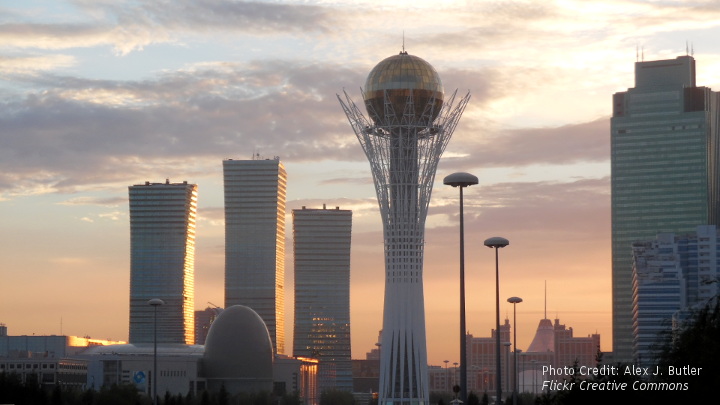
Iran's Azerbaijan Question in Evolution: Identity, Society and Regional Security
